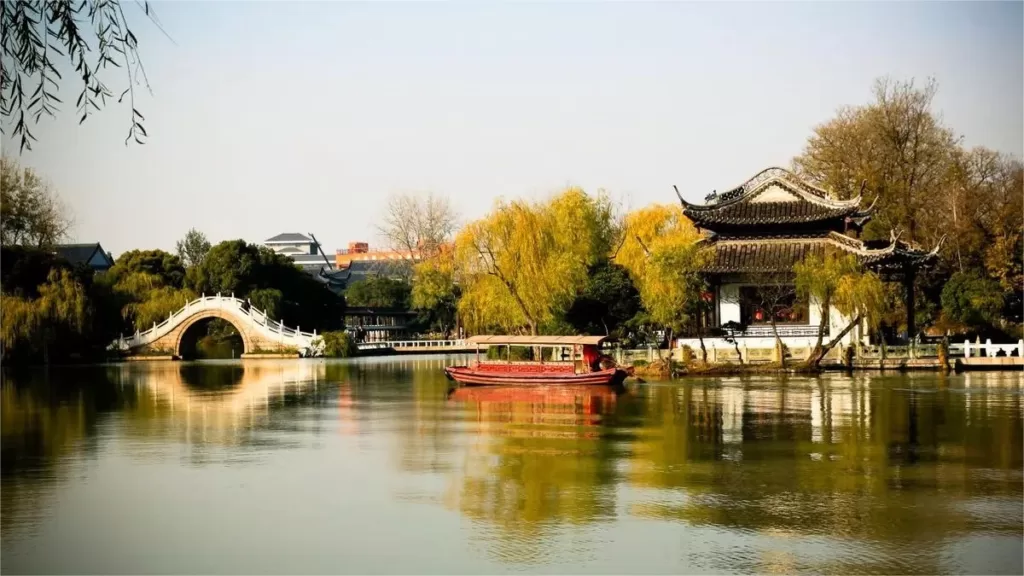纤夫西湖的桥梁


纤夫西湖, located in Yangzhou, Jiangsu Province, China, is a picturesque and historically significant tourist destination known for its exquisite bridges. The park boasts three notable bridges, each with its own unique charm and historical importance: Wuting Bridge (also known as Lotus Bridge), Ershi Si Bridge (or Twenty-four Bridge), and Dahong Bridge.
Wuting Bridge (Five Pavilions Bridge)
Wuting Bridge, also commonly referred to as Lotus Bridge, is a prominent landmark in Yangzhou, situated over the serene waters of Slender West Lake. This bridge is not only one of the city’s iconic architectural marvels but is also recognized as one of China’s ancient “Ten Famous Bridges” and is often hailed as “China’s Most Beautiful Bridge.” Wuting Bridge’s construction dates back to the 22nd year of the Qing Dynasty’s Qianlong era (1757). It was inspired by the Five-Dragon Pavilion in Beijing‘s Beihai Park and the Seventeen-Arch Bridge in the Summer Palace. In 1990, the bridge underwent a restoration, preserving its historical significance and breathtaking beauty.
Ershi Si Bridge (Twenty-Four Bridge)
Ershi Si Bridge, also known as Twenty-four Bridge, is a masterpiece of ancient bridge architecture located in Yangzhou, Jiangsu Province. In recent years, Yangzhou has undergone urban planning efforts to enhance the western part of Slender West Lake, which includes the restoration of Twenty-four Bridge, adding a new dimension to the charm of the ancient city. This single-arch bridge features railings crafted from exquisite white marble, giving it the appearance of a graceful jade ribbon suspended over tranquil waters. The bridge is 24 meters long, 2.4 meters wide, and adorned with 24 columns and 24 steps, with the number 24 being symbolically significant throughout its design.
Dahong Bridge (Giant Rainbow Bridge)
Dahong Bridge, one of the “Twenty-Four Views of Yangzhou,” dates back to the Ming Dynasty’s Chongfen era. It gracefully spans the water, initially constructed with red wooden railings, hence its name “Hong Bridge (Red Bridge).” However, during the first year of the Qing Dynasty’s Qianlong era, it underwent a transformation into a stone bridge. In the early Qing Dynasty, the Salt Transport Commissioner, Ji Qing, along with other officials, funded its reconstruction and added a bridge pavilion. During this period, the name was changed from “Red” to “Rainbow,” (both read hong in Chinese) symbolizing the bridge’s resemblance to a rainbow. Dahong Bridge enjoyed great fame in history, and even Emperor Qianlong himself composed poetry praising its scenic beauty during his visit to Yangzhou.
These three bridges, each with its own historical significance and architectural beauty, offer visitors the opportunity to immerse themselves in the rich cultural heritage and natural splendor of Slender West Lake, making it a must-visit destination for anyone exploring the enchanting city of Yangzhou.